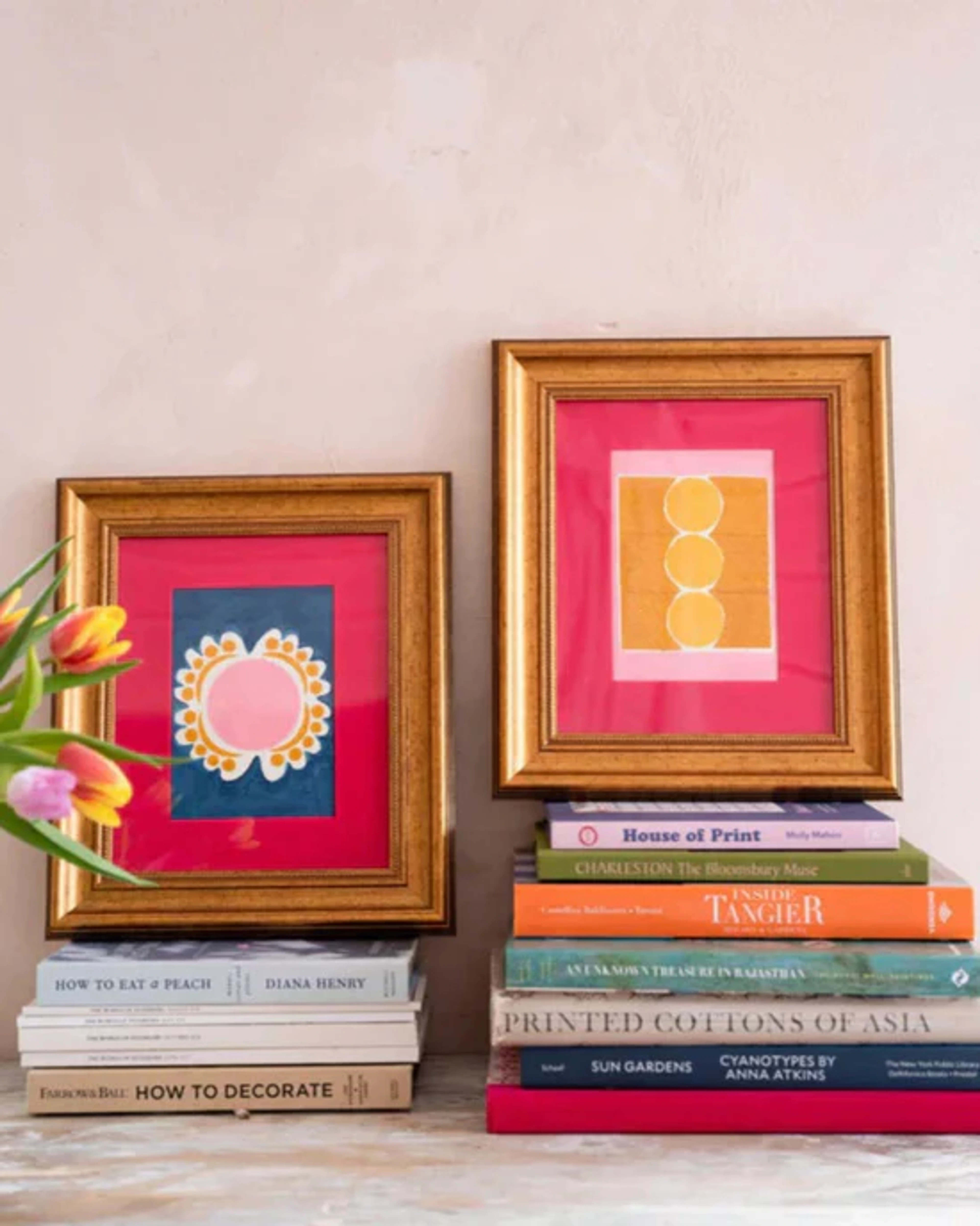
The Ultimate Guide to Pop Art: More Than Just Soup Cans
Dive into the vibrant world of Pop Art with an artist's personal guide. Explore its UK origins, US explosion, key artists like Warhol & Lichtenstein, revolutionary impact, and how to bring that Pop energy into your space. More than just soup cans!
The Ultimate Guide to Pop Art: More Than Just Soup Cans
Okay, let's talk Pop Art. For a long time, I admit, I didn't quite get it. Soup cans? Comic book panels? It felt... simple. Almost too simple. Where was the tortured artist, the deep, hidden meaning I'd been taught to look for in, say, Abstract Expressionism or even the swirling drama of Van Gogh? It felt like a joke I wasn't in on. I remember walking through a gallery once, seeing a giant painting of a hot dog, and just thinking, "Seriously? This is it?" It felt... underwhelming, like the art world was pulling a fast one.
But then, I started looking closer. Not just at the famous pieces, but at the why behind them. And honestly? It clicked. Pop Art isn't simple; it's incredibly smart, often cheeky, and utterly revolutionary. It grabbed the world we were actually living in – the world of advertising, celebrities, and mass production – and shoved it right back in our faces, saying, "This is art now. Deal with it." It was a mirror, sometimes distorted, sometimes crystal clear, reflecting the shiny, consumer-driven reality of the post-war era.
It was a massive shift, a splash of cold, hard reality (or maybe just a really bright, flat color) after the intense emotional depths of earlier modern art movements. It felt... accessible. And maybe that's why it resonated so much, and why it still feels so relevant today. It wasn't just for the elite; it was for everyone who bought groceries, read comics, or watched TV.
So, if you've ever looked at a Warhol print and thought, "Huh?" or wondered why Lichtenstein's dots matter, come with me. Let's dive into the vibrant, sometimes baffling, always fascinating world of Pop Art, and see why it's so much more than just soup cans.
What Exactly Is Pop Art? A Personal Take
At its heart, Pop Art was a reaction and a reflection. The movement first stirred in the early 1950s in Britain, reaching its peak in the late 1950s and 1960s, particularly in the United States. The term "Pop Art" itself is generally credited to British art critic Lawrence Alloway, who used it in the mid-1950s to describe art that celebrated popular culture. The movement's roots in Britain lie with the Independent Group, a collective of artists, critics, and writers who were already discussing mass culture, technology, and imagery. Their landmark 1956 exhibition, "This Is Tomorrow," is often cited as a foundational moment, featuring Richard Hamilton's iconic collage "Just what is it that makes today's homes so different, so appealing?" which perfectly captured the burgeoning consumer age. Looking at that collage now, with its fragmented images of bodybuilders, pin-ups, logos, and modern appliances, it feels incredibly prescient, like a chaotic, vibrant snapshot of a future that was just arriving – a future we're still living in, arguably even more saturated with imagery.
It then really took off in the late 1950s and 1960s in the United States, where artists were immersed in the very culture the British group was observing from a distance. The American artists looked around and saw a society saturated with mass media, consumer goods, and popular culture. They decided that this wasn't something to ignore or look down upon; it was the very fabric of modern life, and therefore, it was valid subject matter for art.
Think about it. Before Pop, art was often seen as something elevated, separate from everyday life. It was about grand themes, personal emotion, or abstract concepts. Pop Art said, "Nah, your can of soup, your favorite movie star, that comic strip you read – that's all fair game." It deliberately blurred the lines between "high" art (like classical painting or sculpture) and "low" culture (like advertisements, comic books, or product packaging). It was a radical idea at the time, challenging centuries of artistic tradition. It felt like a playful rebellion, a wink and a nudge to the stuffy art world.
It was democratic, relatable, and often, just plain fun. It invited viewers to engage with art using a visual language they already understood from their daily lives.
Key Characteristics: The Vibrant Visual Language of Pop
Pop Art has a distinct look and feel. Once you know what to spot, you'll start seeing its influence everywhere. Here are some of the defining features that make it instantly recognizable:
- Everyday Subject Matter: This is the big one, the core idea. Instead of traditional landscapes or portraits of nobles, Pop Art gives you images of consumer products (Campbell's Soup Cans, Coca-Cola bottles, vacuum cleaners), celebrities (Marilyn Monroe, Elvis Presley), comic strips, and mundane objects. It took the ordinary and made it extraordinary, forcing you to look at the familiar with new eyes. Think of Claes Oldenburg's giant sculptures of mundane items like clothespins or soft sculptures of food – they're absurd, playful, and make you question the significance of the things we surround ourselves with. Another fascinating example is George Segal's plaster cast figures placed in everyday settings like diners or bus stops, capturing moments of ordinary life and elevating them to art.
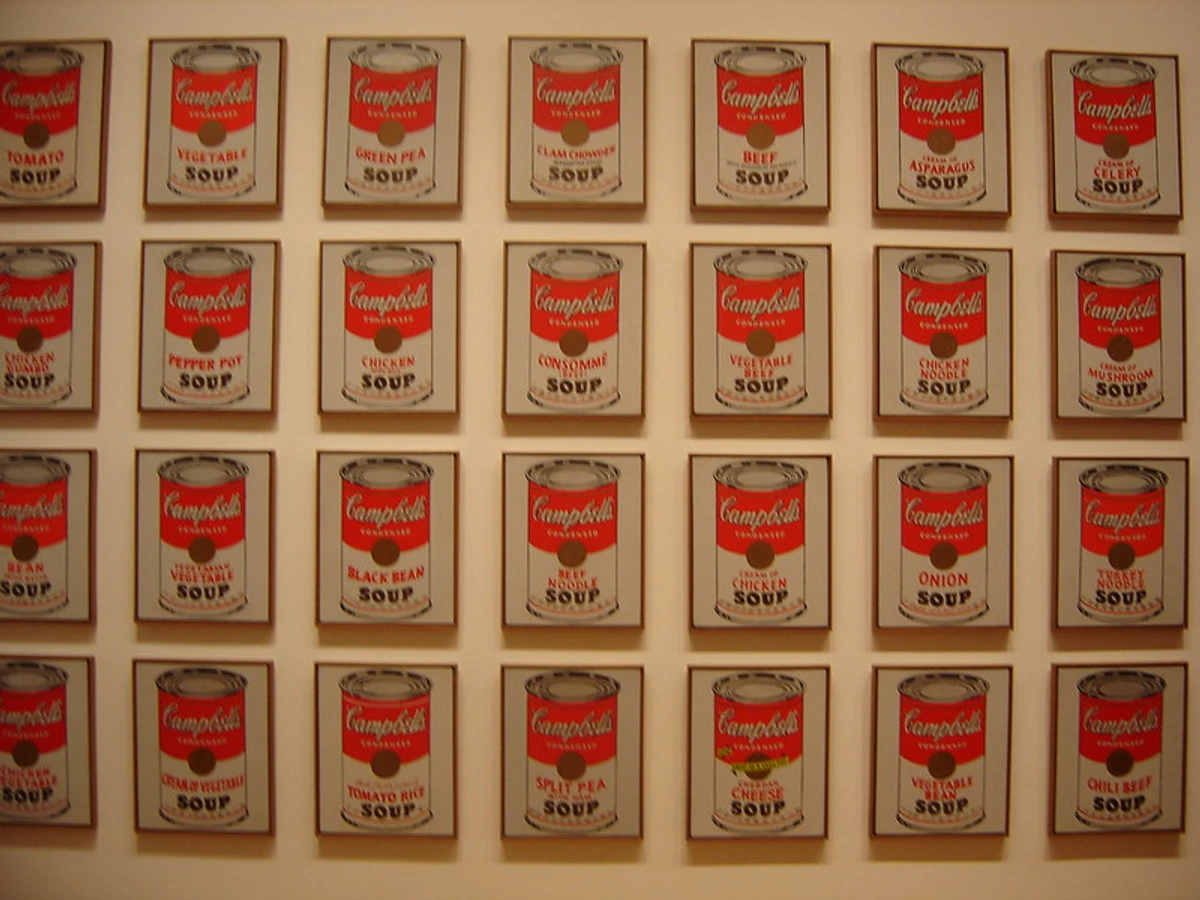
- Bold, Flat Colors: Forget subtle palettes and delicate shading. Pop Art is loud and proud with its color choices. Bright, unmixed primary and secondary colors are common, often applied in flat, unmodulated areas. As an artist who often works with vibrant hues, I find their fearless approach to color incredibly liberating and impactful. It grabs your attention immediately, much like a billboard or a comic book panel is designed to do. It's color as a statement, not just a descriptor.
- Commercial Techniques: Artists adopted methods from commercial printing and advertising. Screen printing was hugely popular because it allowed for mass production and repetition, directly mimicking the consumer culture they depicted. This was revolutionary because it challenged the traditional notion of the artist's unique hand and skill. By using mechanical reproduction, artists like Warhol questioned the very idea of originality and authorship. Critics at the time were often scandalized, seeing it as a rejection of artistic craft in favor of mere copying. It felt like cheating to some, but to the Pop artists, it was simply using the tools of their time, elevating a "low" commercial technique to "high" art status.

- Repetition: Repeating images, like Warhol's Campbell's Soup Cans or Marilyn prints, emphasized the mass-produced nature of modern life and also flattened the subject matter, turning icons into commodities. It's like seeing the same ad over and over – it becomes part of the visual noise, but also strangely iconic. For me, repetition in art can create a rhythm, a visual beat that is both hypnotic and unsettling, reflecting the relentless pace of modern media and advertising.
- Appropriation: This is a key strategy. Pop artists didn't just depict popular culture; they used it. They borrowed existing images directly from advertisements, comic strips, photographs, and packaging, often with minimal alteration beyond scale, color, or repetition. This act of taking something pre-existing and presenting it as art challenged traditional ideas of artistic creation and originality. It forced viewers to question what constitutes art and who gets to decide. It's a concept that feels incredibly relevant in today's digital world, where remixing and sharing images is commonplace – Pop Art was doing it decades ago!
- Hard Edges and Clear Forms: Unlike the gestural brushstrokes of Abstract Expressionism, Pop Art often features clean lines and defined shapes, sometimes mimicking the look of comic book panels or advertisements. This gave the work a cool, detached, and graphic quality. It felt less about the artist's inner turmoil and more about the external world, the surface of things.
- Scale and Monumentality: Pop artists often took small, everyday objects or images and blew them up to monumental size. This shift in scale forces the viewer to confront the object in a new way, giving it an importance and presence it wouldn't normally have. Oldenburg's giant sculptures are a prime example, turning a simple clothespin into a towering public artwork. It's a way of saying, "Look at this! This mundane thing is part of our world, and it's big."
- Unconventional Materials: While painting and printmaking were central, Pop artists weren't afraid to use materials outside the traditional art canon. This included plastics, fiberglass, fabric (especially in soft sculptures), and incorporating actual found objects into their work. This further blurred the lines between art and everyday life and challenged the preciousness often associated with fine art materials.
- Use of Text: Beyond just the onomatopoeia in Lichtenstein's comics or the single word power of Robert Indiana, many Pop artists incorporated text directly into their work, often lifted from advertising slogans, headlines, or product packaging. This reinforced the connection to mass media and consumer culture, sometimes adding layers of meaning or irony.
- Irony, Satire, and Ambiguity: While often appearing to celebrate popular culture, there was frequently an underlying layer of irony, critique, or ambiguity about consumerism, celebrity, and media saturation. Lichtenstein's dramatic comic panels, taken out of context and monumentalized, can seem both celebratory and subtly mocking of melodrama. Warhol's endless repetition of consumer goods or celebrity faces can be read as a commentary on their ubiquity and eventual loss of meaning. It makes you think, even while you're enjoying the bright colors. It's like holding up a mirror to society and saying, "Look, this is what you're obsessed with! Is it art? Is it just... stuff?" The ambiguity is part of the fun, and part of its lasting power.
The Big Names: Who Shaped Pop Art?
Before the full explosion of Pop, artists like Jasper Johns and Robert Rauschenberg were already blurring the lines between painting and sculpture, incorporating everyday objects and imagery into their work. Their use of flags, targets, and found objects paved the way for Pop's embrace of the mundane and its challenge to traditional artistic boundaries. They are often seen as Proto-Pop or Neo-Dada figures, bridging the gap between Abstract Expressionism's focus on materials and process and Pop Art's engagement with mass culture.
When you think core Pop Art, a few names immediately spring to mind. These artists weren't just making art; they were cultural commentators, holding a mirror up to society, embodying the characteristics we just discussed.
Andy Warhol (1928-1987)
The undisputed king of Pop. Warhol understood fame, media, and consumerism like no one else. His work, from the Campbell's Soup Cans to the Marilyn Diptych and portraits of figures like Elvis Presley, is instantly recognizable. He used screen printing to create multiples, blurring the line between artist and machine, originality and reproduction. He turned his studio, The Factory, into a hub of creativity and celebrity, further cementing his connection to popular culture. The Factory wasn't just a workspace; it was a social scene, a place where artists, musicians, actors, and socialites mingled, reflecting Warhol's fascination with fame and mass media. He became as much a product of Pop culture as his art. His detached, almost factory-like approach to art production was a direct challenge to the romantic notion of the solitary artistic genius. It was a fascinating, sometimes frustrating, performance.
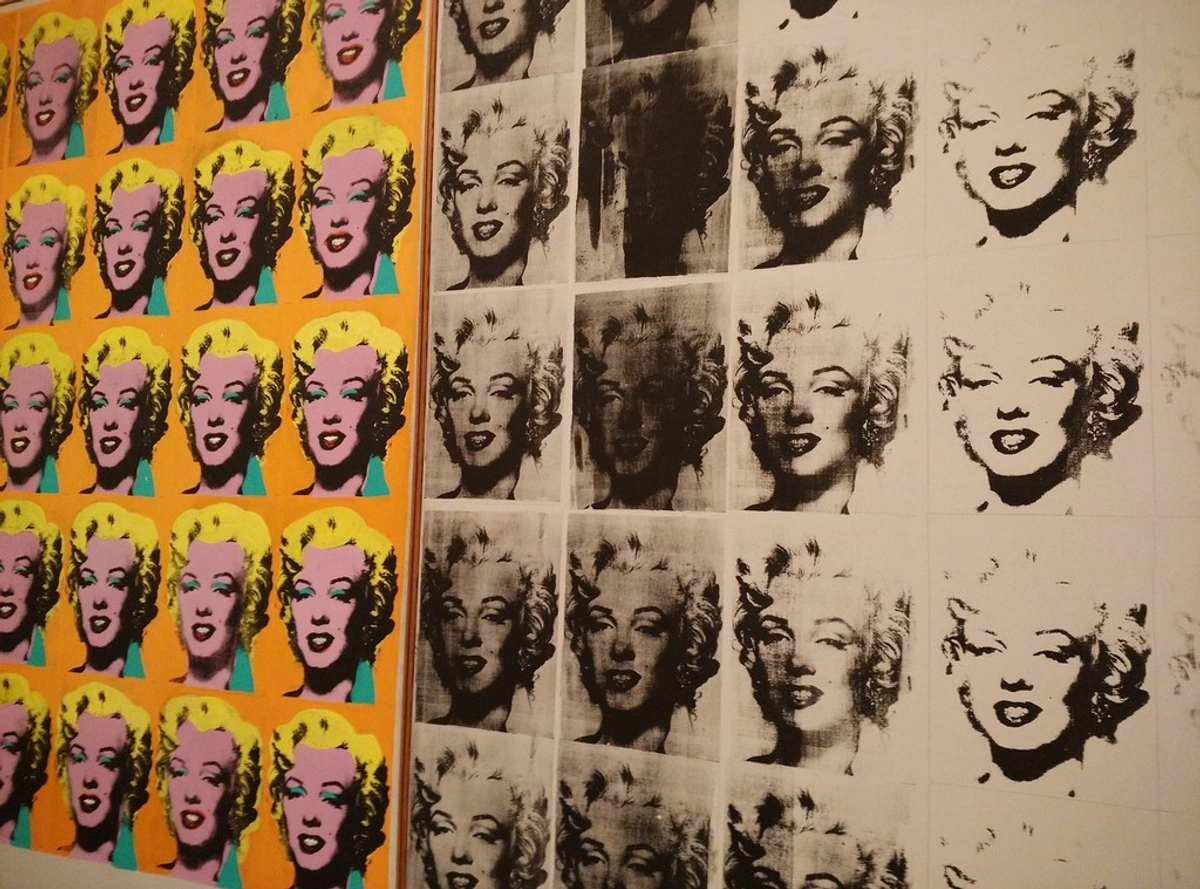
![]()
Roy Lichtenstein (1923-1997)
Lichtenstein took inspiration directly from comic strips, blowing up panels to monumental size and meticulously recreating the Ben-Day dots used in commercial printing. His works, like Whaam! and Drowning Girl, are iconic for their bold outlines, limited color palettes, and dramatic, often melodramatic, subject matter drawn from pulp fiction and advertising. He made you look at something disposable – a comic panel – and see it as fine art. It's fascinating how he transformed a cheap printing technique into a signature artistic style, simultaneously celebrating and subtly critiquing the emotional hyperbole of comics. His work always makes me smile; it's so precise and yet so full of implied drama.
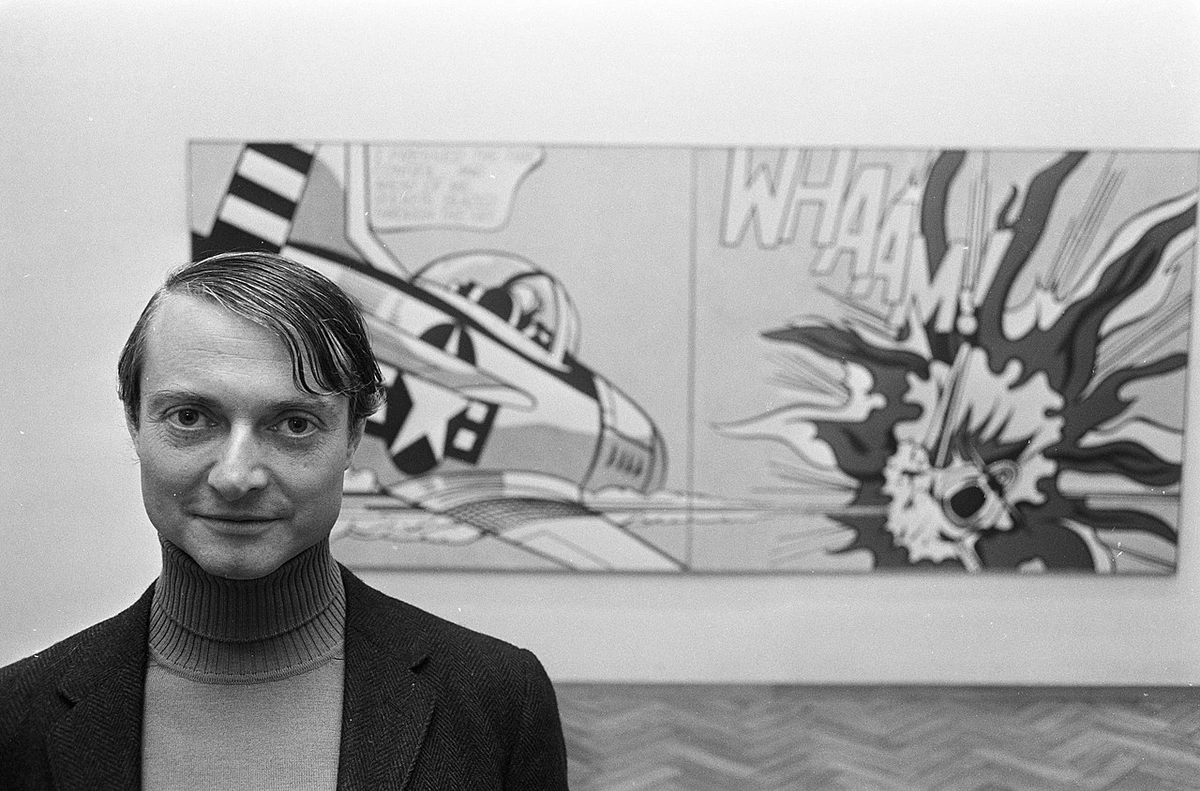
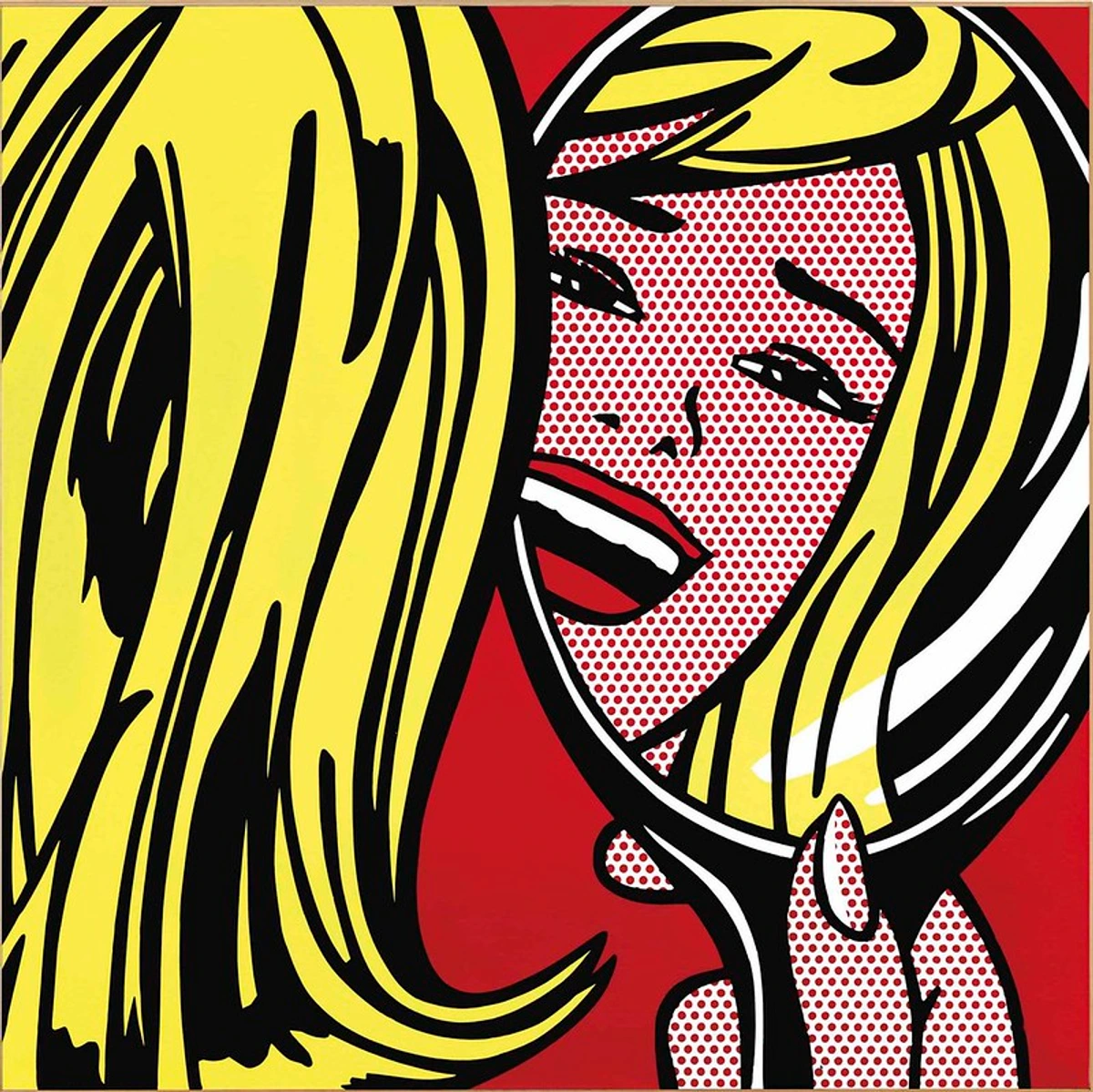
Other Notable Pop Artists:
- Richard Hamilton (British, 1922-2011): Often cited as a pioneer of Pop Art, his collage "Just what is it that makes today's homes so different, so appealing?" is considered one of the earliest examples, truly capturing the essence of post-war consumer culture through fragmented imagery from magazines. It's a dense, fascinating piece that rewards close looking.
- Eduardo Paolozzi (British, 1924-2005): Another early figure from the Independent Group, known for his collages and sculptures using found objects and magazine imagery, exploring the iconography of popular culture and technology. His work feels a bit more raw and textured than the slick American Pop.
- James Rosenquist (American, 1933-2017): Known for large-scale paintings combining fragmented images from advertising and popular culture, often creating immersive, billboard-like experiences that commented on the visual overload of modern life. His scale is often breathtaking, wrapping you in the imagery.
- Claes Oldenburg (Swedish-American, 1929-2022): Famous for his monumental sculptures of everyday objects, like giant clothespins or soft sculptures of food (seen in his installation "The Store"), playing with scale and material to make the familiar strange and significant. His work often has a playful, almost absurd quality that I find really charming.
- George Segal (American, 1924-2000): Known for his life-size plaster figures cast from live models, often placed in mundane, everyday settings like bus stops, diners, or street corners. These poignant, ghostly figures capture moments of quiet isolation and contemplation within the bustling modern world, offering a more melancholic take on Pop's engagement with the everyday.
- Tom Wesselmann (American, 1931-2004): Best known for his "Great American Nudes" series and still lifes that incorporated real objects, advertising imagery, and bold, flat colors. His work often explored themes of consumerism, sexuality, and the idealized American lifestyle with a slick, graphic aesthetic.
- Robert Indiana (American, 1928-2018): Best known for his iconic "LOVE" sculpture and prints, which brought text and simple, bold graphics into the fine art realm, transforming a single word into a powerful, universally recognizable symbol. It's amazing how much impact such a simple, graphic design can have.
- Sister Mary Corita Kent (American, 1918-1986): A Catholic nun and artist known for her vibrant, text-based serigraphs (screen prints) that blended Pop aesthetics with messages of social justice, peace, and spirituality. Her work is a beautiful example of how Pop techniques could be used for profound commentary, not just commercial critique.
- Evelyne Axell (Belgian, 1935-1972): A Belgian artist known for her bold, often sensual paintings on plastic, exploring female identity and sexuality within the Pop aesthetic. Her use of materials and focus on the female form offer a distinct European perspective within the broader Pop movement.
Why Did Pop Art Happen? The Cultural Shift
Pop Art didn't just appear out of nowhere. It was a product of its time – the post-war economic boom, particularly in the US, which led to increased prosperity, mass production, and a burgeoning consumer culture. The rise of television, advertising, and mass media created a shared visual landscape that artists couldn't ignore. This saturation of commercial imagery directly fueled the Pop artists' choice of subject matter and techniques.
It was also a deliberate move away from the dominant art movement of the time, Abstract Expressionism. Abstract Expressionism was all about the artist's inner world, emotion, and the act of painting itself. It could feel intense, personal, and sometimes, let's be honest, a bit inaccessible or overly serious to the average person. Pop Art, in contrast, was outward-looking. It was cool, detached, and focused on the shared visual language of popular culture. It felt like a breath of fresh, albeit commercially-scented, air after the perceived seriousness and introspection of Abstract Expressionism. It was like the art world suddenly decided to step outside and look around, rather than just staring intently at its own navel.
The 1960s were also a time of significant social and political upheaval, particularly in the United States, with the Civil Rights Movement, the Vietnam War, and growing counter-cultural movements. While Pop Art didn't always directly address these issues, its focus on mass media, celebrity, and the surface of American life can be seen as a commentary on a society grappling with rapid change and conflicting realities. The detached, often ironic tone could be interpreted as a response to the era's anxieties, contradictions, or even a way to process the overwhelming influx of information and imagery.
This shift also coincided with a growing commercialization of the art world itself. While Pop Art often critiqued consumerism, it also embraced it. Warhol, in particular, was a master of self-promotion and understood the marketability of his work. The reproducibility offered by techniques like screen printing meant art could reach a wider audience, and the recognizable subject matter made it instantly appealing to collectors and the public alike. This commercial success was both a triumph and a point of criticism for the movement.
It democratized art in a way, bringing it down from the ivory tower and placing it firmly in the realm of the everyday. This was exciting for some, scandalous for others. Art critics debated its validity – was it too commercial? Too shallow? Was it just a fad? But the public responded, recognizing the images and finding a new way to connect with art. It reflected their world back at them.
Pop Art Goes Global: Beyond the UK and US
Pop Art wasn't confined to just the UK and US. Its influence quickly spread, with artists in other countries adapting its core ideas and aesthetics to their own cultural contexts. It's fascinating to see how the movement mutated and took on local flavors.
In Europe, artists like Sigmar Polke and Gerhard Richter in Germany incorporated elements of advertising and photography into their work, often with a critical edge that reflected post-war German society. Italian Pop Art, sometimes overlapping with movements like Arte Povera, also engaged with mass media and consumer objects, but often with a focus on materials and a more overtly political or social commentary. Michelangelo Pistoletto, for instance, created "mirror paintings" that incorporated photographic images on polished steel, reflecting the viewer and their surroundings, blurring the lines between art, reality, and mass media imagery.
In Japan, artists like Tadanori Yokoo blended Pop aesthetics with traditional Japanese imagery and graphic design, creating vibrant, often psychedelic works that reflected Japan's own post-war modernization and engagement with Western culture. Later artists, like Takashi Murakami, with his Superflat movement, can be seen as contemporary heirs to this tradition, drawing heavily on manga and anime culture, explicitly linking contemporary Japanese visual culture to the legacy of Pop Art.
Latin American artists also engaged with Pop, often using its visual language to critique consumerism and political issues specific to their regions. This global spread showed that the core ideas of Pop Art – engaging with contemporary culture, challenging traditional art boundaries, and using accessible imagery – resonated far beyond its origins, proving its adaptability and enduring relevance.
Pop Art's Lasting Influence
Even though the classic Pop Art period is decades behind us, its impact is undeniable. It fundamentally changed how we think about:
- Subject Matter: Anything and everything can be art. The mundane is fair game. This opened the door for countless subsequent movements, from Conceptual Art to Street Art.
- Technique: Commercial methods like screen printing became legitimate tools for fine artists. This paved the way for other non-traditional techniques and materials in art, including collage, assemblage, and digital art. Pop Art's embrace of printmaking, in particular, had a massive impact on the accessibility and dissemination of art, making it possible for more people to own art.
- The Artist's Role: Artists could be commentators, appropriators, even celebrities themselves, engaging directly with mass culture. The artist became less of a solitary genius and more of a figure interacting with and reflecting the world around them.
- The Art Market: Pop Art's embrace of mass production and celebrity culture had a huge impact on the commercial side of the art world, influencing how art is produced, marketed, and valued. The idea of limited edition prints, for example, gained significant traction through Pop Art.
- Design and Visual Culture: Beyond the fine art world, Pop Art's influence is deeply embedded in graphic design, illustration, fashion, advertising, and even music video aesthetics. Its bold colors, graphic forms, and use of popular imagery are ubiquitous in contemporary visual culture.
Beyond the fine art world, you see the echoes of Pop Art everywhere today, from graphic design and illustration to fashion, music video aesthetics, and even architecture that incorporates bold colors and graphic elements. My own work, with its focus on bold color and sometimes graphic elements, definitely owes a debt to the Pop artists who weren't afraid to be vibrant and direct. Exploring all art styles can show you just how interconnected these movements are.
If you're curious about how contemporary artists continue to build on these ideas, check out guides to famous contemporary art or best contemporary artists. Many contemporary artists still engage with themes of consumerism, media, and popular culture, directly or indirectly influenced by Pop Art's legacy, often categorized under terms like Neo-Pop.
Bringing Pop Art Energy into Your Space
One of the great things about Pop Art is how well it translates to home decor. Its bold colors and recognizable imagery can add a fantastic burst of energy and personality to any room. Whether you're decorating a living room, bedroom, or even a kitchen, a piece of Pop Art can be a real statement. Choosing Pop Art for your home is, in a way, continuing the movement's idea of bringing art into everyday life. For me, adding a Pop-inspired piece is like injecting a shot of visual caffeine into a space – it wakes things up and adds a sense of fun.

- Start with Prints: Original Pop Art can be pricey, but high-quality prints are widely available and a great way to get started. Look for iconic images or discover contemporary artists working in a similar vein. (Check out my guide on buying art prints or where to find affordable original art online). Pop Art's embrace of printmaking makes this a particularly authentic way to collect.
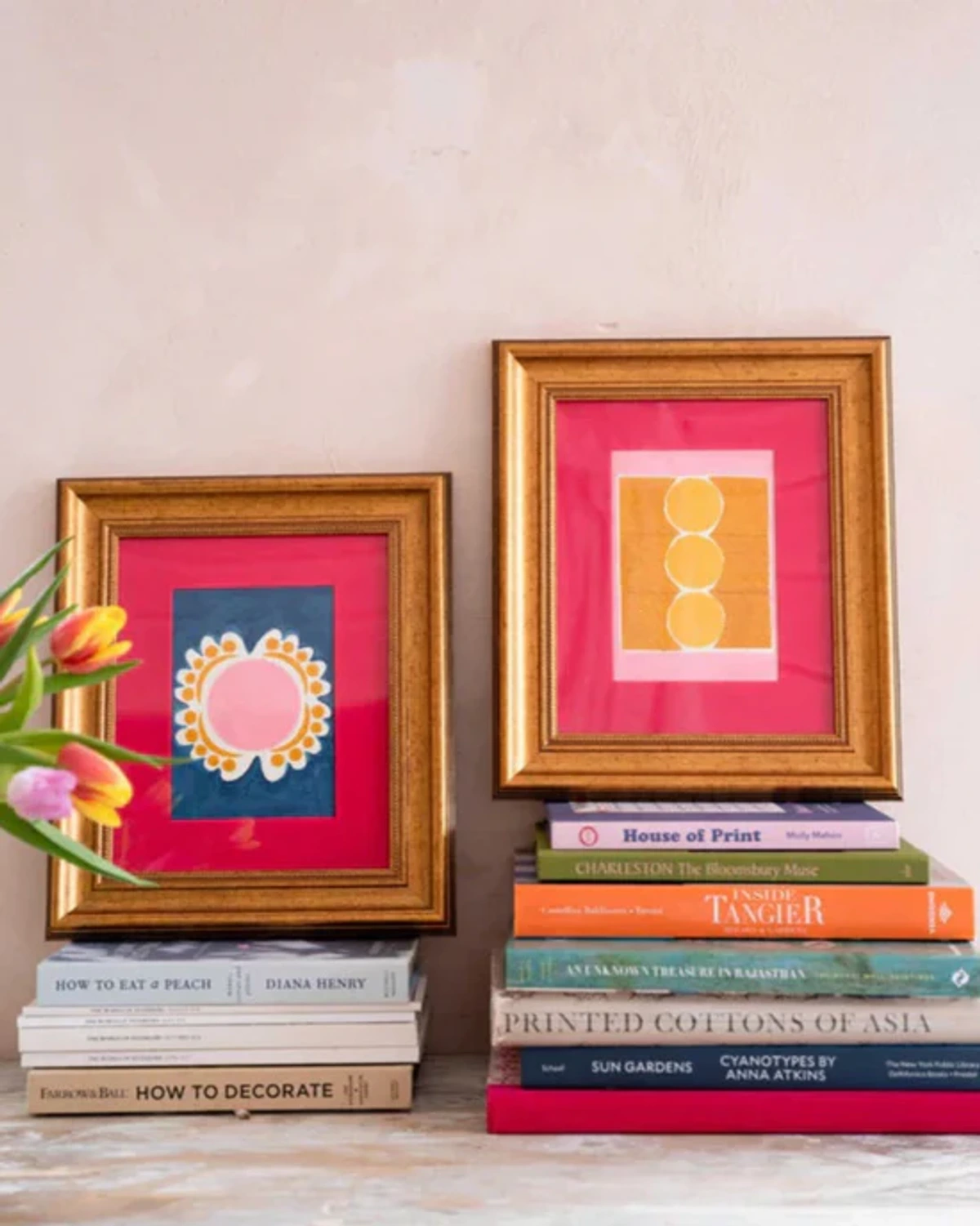
- Think Color: Use Pop Art as inspiration for your color palette. Don't be afraid of bold accents or contrasting hues on your walls or in your furnishings. (My guide on choosing art based on room color might help!) Pop Art teaches us that color can be a powerful statement in itself.
- Mix and Match: Pop Art plays well with other styles. A bold Pop print can look amazing against a minimalist backdrop or mixed into an eclectic gallery wall. (Speaking of which, check out my tips on how to decorate a wall). Its graphic nature provides a strong anchor.
- Consider the Subject: Choose imagery that resonates with you. Is it a celebrity you admire? A product that brings back memories? A comic panel that makes you smile? Pop Art is personal in its own way, reflecting the culture you live in. It's about finding the extraordinary in the ordinary.
- Incorporate Pop-Inspired Objects: Don't limit yourself to wall art. Look for home accessories that echo Pop Art's aesthetic – think graphic pillows, bold ceramic vases, vintage advertising signs, or brightly colored furniture. These pieces can add a playful, Pop-infused energy to your space.
If you're feeling inspired to add some art to your home, whether it's Pop or something else, my general guide on art at home or how to buy art can offer some helpful starting points. And if you're interested in seeing some of my own colorful, contemporary work, feel free to browse my art for sale. My own journey as an artist, which you can explore on my timeline, has certainly been influenced by the fearless experimentation of movements like Pop Art.
Frequently Asked Questions About Pop Art
Let's tackle a few common questions I hear about Pop Art.
Q: Is Pop Art still being made today? A: While the classic movement peaked in the 60s, its influence is massive. Many contemporary artists use similar themes, techniques (like appropriation), and bold visual styles. The term Neo-Pop is often used to describe contemporary art that directly draws on Pop Art's aesthetics and themes. So, while not strictly the Pop Art movement, its spirit and aesthetics live on in much of today's art.
Q: What's the difference between UK and US Pop Art? A: Good question! UK Pop Art started slightly earlier and was often more academic and focused on the meaning of American popular culture from a distance, sometimes with a critical or sociological lens. Artists like Hamilton and Paolozzi often used collage to dissect media imagery. US Pop Art, on the other hand, was more direct, often appearing to celebrate (and sometimes subtly critiquing) the experience of American consumerism and media from within. It was generally bolder and more commercial in its aesthetic, with artists like Warhol and Lichtenstein directly mimicking commercial production methods.
Q: Was Pop Art only painting? A: Not at all! While painting and screen printing were dominant, Pop artists also worked extensively in sculpture (Oldenburg's soft sculptures, Indiana's word sculptures, Segal's figures), collage (Hamilton, Paolozzi), printmaking, and even early forms of installation and performance art, all engaging with popular culture. They also used unconventional materials like plastics and fabric.
Q: What are Ben-Day dots? A: Ben-Day dots are a printing technique, named after Benjamin Henry Day Jr., that uses small colored dots (often cyan, magenta, yellow, and black) spaced or overlapped to create shading and colors in images, especially in comic books and newspapers. Lichtenstein famously mimicked and exaggerated these dots in his paintings as a signature style, turning a mechanical process into a deliberate artistic choice.
Q: How was Pop Art received by critics at the time? A: It was highly controversial! Many traditional critics dismissed it as vulgar, commercial, and lacking skill or depth compared to Abstract Expressionism. They questioned if it was even 'art', seeing it as merely copying popular imagery. It felt, to some, like a dumbing down of art. However, others recognized its relevance and commentary on modern life, appreciating its energy, wit, and accessibility. The debate itself highlighted the movement's challenge to established art world norms.
Beyond the Can: The Enduring Legacy
Looking back, it's clear that Pop Art was far more than a fleeting trend or a simple celebration of consumerism. It was a pivotal moment that fundamentally altered the course of art history. It challenged established norms, democratized subject matter, and embraced new techniques, reflecting the rapidly changing world around it. It forced the art world to confront the reality of mass culture and its pervasive influence. It also, perhaps unintentionally, made art feel a little less intimidating, a little more connected to the world outside the gallery walls.
For me, as an artist, Pop Art is a constant reminder that inspiration can be found anywhere – in the everyday, the mass-produced, the seemingly trivial. It taught us to look at the world with fresh, bold eyes and not be afraid to break the rules. Its energy, its wit, and its sheer visual punch continue to resonate, proving that sometimes, the most profound statements can be made with the brightest colors and the most familiar images.
So next time you see a soup can, a comic panel, or a celebrity portrait, take a moment. You might just be seeing the world through the revolutionary lens of Pop Art, and maybe, just maybe, you'll find a little bit of that Pop energy in your own everyday life.
If you're interested in exploring other art movements or finding art for your own space, don't hesitate to dive deeper into the site or check out my work. My own journey as an artist, which you can explore on my timeline, has certainly been influenced by the fearless experimentation of movements like Pop Art.




